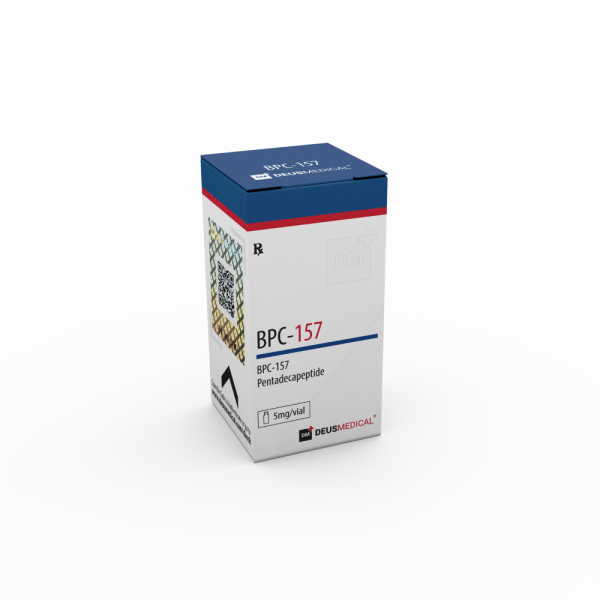Secure Gastric Pentadecapeptide Bpc 157 Therapy For Main Abdominal Compartment Disorder In Rats Linear partnerships were observed between AUC0-- t and BPC157 doses, along with between Cmax and BPC157 doses (Numbers 2D, E). The outright bioavailability observed after IM administration of each dosage in dogs was 45.27%, 47.64%, and 50.56%, respectively. After repeated IM management of BPC157 at 30 μg/ kg for 7 successive days, the plasma concentration versus time contour was similar to that observed after a solitary IM injection of 30 μg/ kg (Figure 2C). However, the pharmacokinetic specifications after repeated IM administration changed somewhat contrasted to those observed after a single IM shot, with a little reduction in Cmax and t1/2 and a boost in Tmax.
What Are The Major Advantages Of Utilizing Bpc-157?
Consequently, we observed that this helpful impact, after direct injury (long-term ligation) applied to 1 or 2 major vessels, could quickly oppose more basic damages (conserved intra-abdominal hypertension, either high (grade III) or extremely high (grade IV)), as all blood vessels which can be compressed with boosted intra-abdominal pressure. For that reason, a "bypassing vital," i.e., an activated azygos capillary as a rescuing path, staying clear of both the lung and liver and additionally noted in Budd-- Chiari syndrome (i.e., suprahepatic occlusion of the substandard caval blood vessel) (Gojkovic et al., 2020), combines the inferior caval blood vessel and exceptional caval capillary through straight blood delivery. Thus, activated azygos capillary shunt could reorganize blood flow and instantaneously undermine the consequences of kept high intra-abdominal pressure, both peripherally and centrally. With the used procedure (i.e., 25, 30, 40, or 50 mmHg intra-abdominal hypertension), there was a normal downhill chain of occasions, despite the type of anesthesia (i.e., esketamine, as ketamine is an antioxidant (Xingwei et al., 2014) that may provide a more prolonged survival duration than thiopental). The abdominal wall surface conformity limit was crossed mechanically, with no more stretch of the abdominal area; this enhanced intra-abdominal stress, pressed vessels and body organs, and raised the diaphragm as a predetermined clear-cut result (Depauw et al., 2019).Bpc 157 Peptide Bpc 157 Review, Side Effects, Dosage, Cycles, Before And After Results - Outlook India
Bpc 157 Peptide Bpc 157 Review, Side Effects, Dosage, Cycles, Before And After Results.
Posted: Tue, 08 Aug 2023 07:00:00 GMT [source]


Bpc 157's Benefits: Past The Restriction
Extra surprisingly, BPC-157 is highly stable and resistant to hydrolysis or enzyme food digestion, also in the gastric juice. Furthermore, it is conveniently liquified in water and needs no carrier for its application.13 These findings indicate that BPC-157 might become a. restorative agent for the therapy of chemical-induced melt injury. Previous studies have actually shown that BPC-157 advertises the recovery of different cells, including skin,36 muscle,15,37-- 39 bone,40 tendon,41 and tendon42 in numerous animal designs. As a whole, blockage of the analytical and cerebellar cortex, hypothalamus/thalamus, and hippocampus was observed, with edema and big areas with boosted varieties of karyopyknotic cells, along with intracerebral hemorrhage, mainly in the infratentorial space, impacting the cerebello angle/area (Numbers 12, 13, 14, 15). We noted a raised number of karyopyknotic cells in all four regions, i.e., the analytical and cerebellar cortex, hippocampus, and hypothalamus/thalamus (Figure 14). Specifically, there was karyopyknosis and degeneration of Purkinje cells of the cerebellar cortex and marked karyopyknosis of pyramidal cells in the hippocampus. Finally, management of BPC-157 to alkali-burn injury healing was explored in the existing study. We showed that BPC-157 considerably enhanced the injury healing activity on alkali-burned rats. The effects of BPC-157 on HUVECs could be moderated by activation of ERK1/2 phosphorylation, causing improved cell spreading, migration, and tube development.- Agent cells specimens were embedded in paraffin, sectioned at 4 μm, stained with hematoxylin and eosin (H&E), and assessed by light microscopy making use of an Olympus 71 digital video camera and an Olympus BX51 microscopic lense (Japan) acquiring digital pictures saved as uncompressed 24-bit RGB TIFF data.Vice versa, the stabilized site and caval stress and aortal pressure as a cause-consequence are convincing evidence of the functioning "bypassing vital" (i.e., the azygos vein).The observations of today study and previous safety and security analysis and pharmacodynamic research study will certainly offer fundamental information for even more detailed professional study.Some studies have actually suggested that BPC-157 may hinder tumor growth in certain cancer cells models.
Is BPC 157 great for your skin?
In addition, BPC 157 for females is good for greater than just joints. It additionally may be able to improve skin, muscle mass, and other components of the body to heal, consisting of organs like the stomach, which may struggle with excruciating abscess. You can find out more As a whole, this peptide has been revealed to assist cells in the body recuperate and recover.